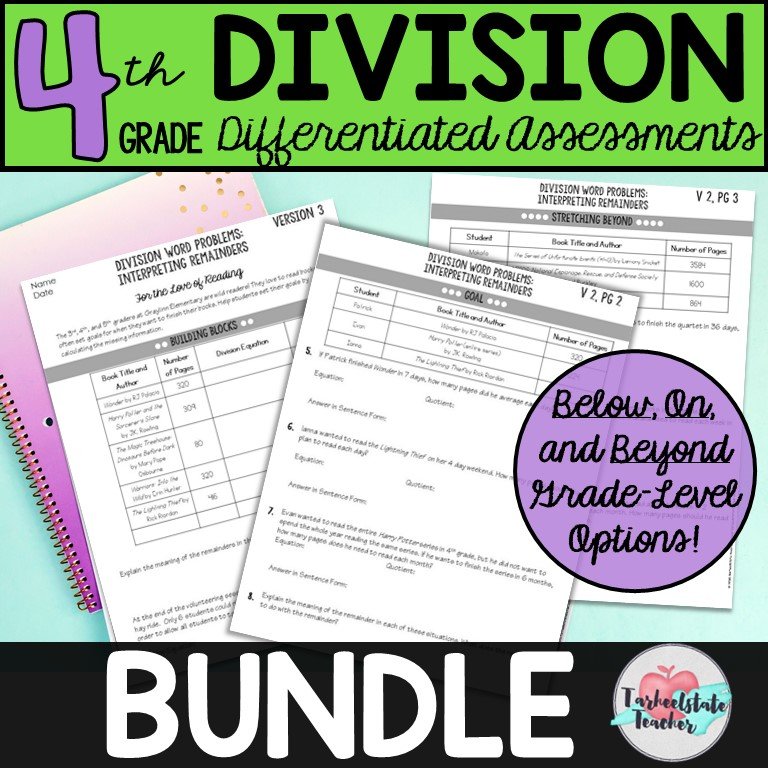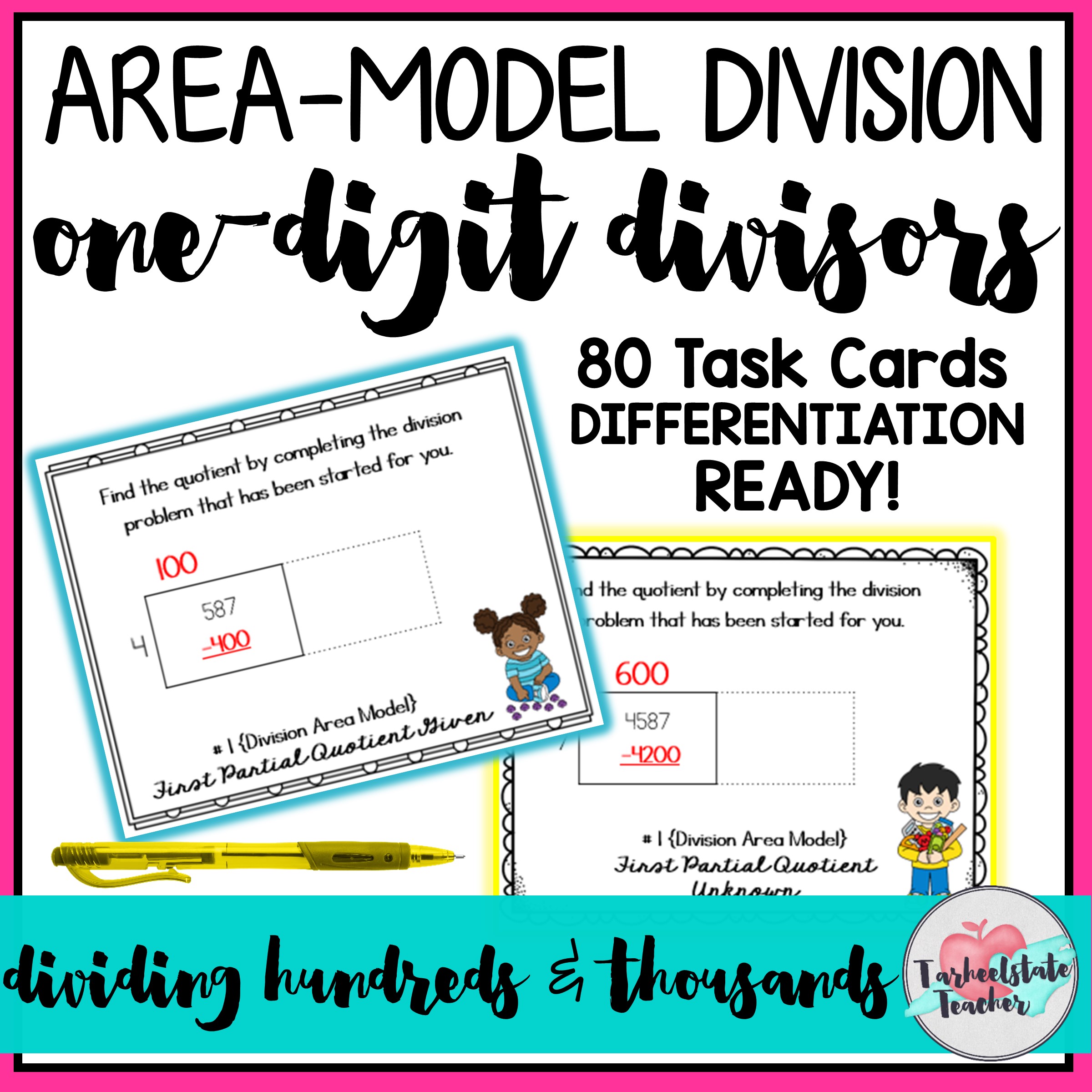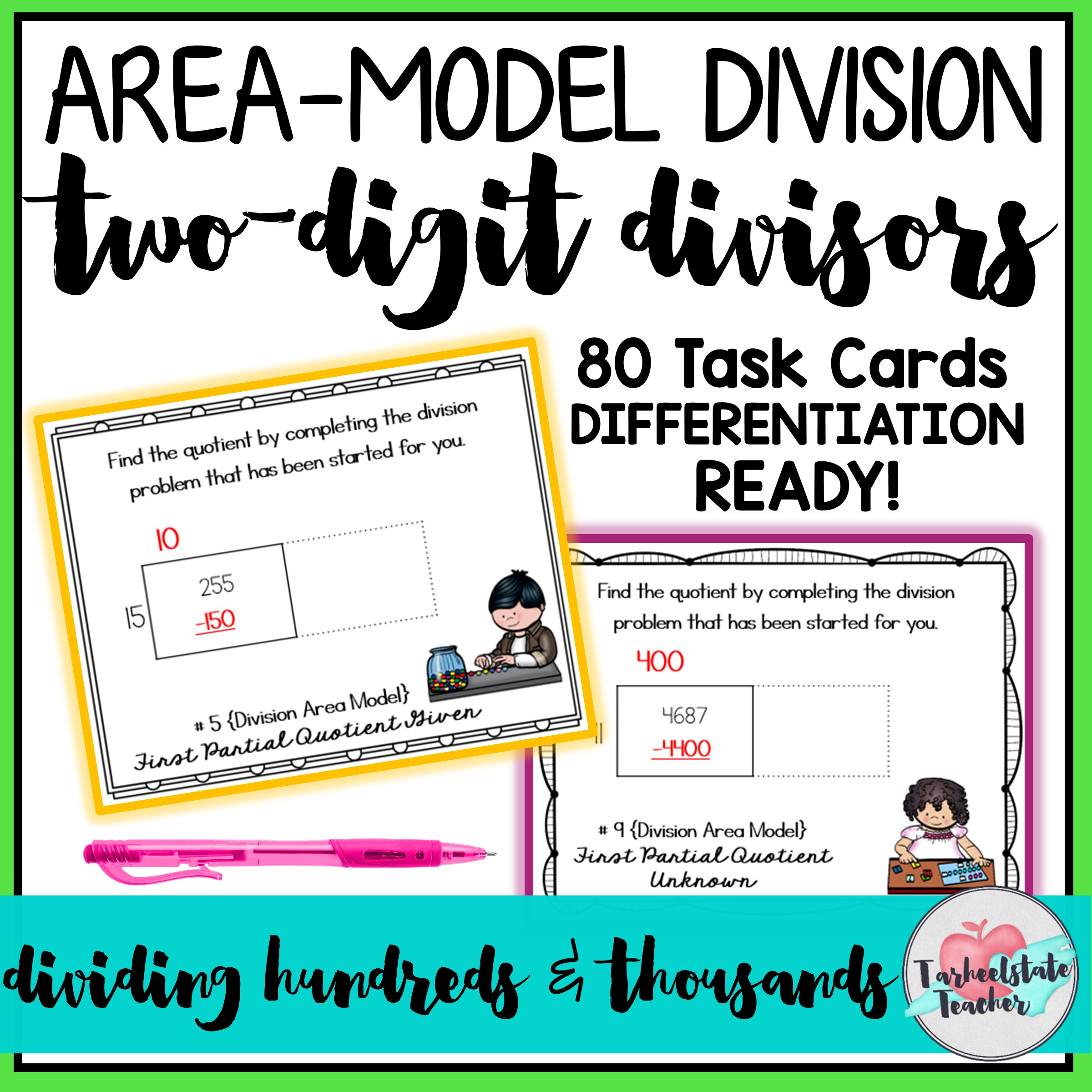Dividing Whole Numbers: Ideas for 4th and 5th Grade
Looking for fresh ideas and activities for teaching whole number division that might make it more fun and help your 4th or 5th graders master the process of division more quickly? I’ve got some ideas, tips, and free resources that I use to scaffold and differentiate my division with whole numbers unit.
It is impossible for me to go into my whole number division unit without plans to scaffold, differentiate, and utilize small group teaching methods to ensure that my students understand the concept of division.
Mastering division with whole numbers can be a real challenge for our 4th grade and 5th grade students. But with the right “teacher-moves” and scaffolding to support students from one level to the next, I believe we can take the stress out of this {fun} math topic.
Yes, I said FUN! I actually LOVE teaching whole number division! It seems to be one of the key times I can depend on each year to use math to teach my students to have a growth mindset.
I’ve shared this before, but I've learned to envision my standards on a continuum of learning. I connect what my grade-level standards require students to be able to do to lower-level, pre-requisite skills that can help them "build up" to the grade-level learning goal. In addition to helping my students master a concept, I like to figure out what should be required of students who are ready to go beyond my grade-level standards. I tack these more challenging skills onto my continuum of learning as a stretch for students who work beyond grade level.
I am a big advocate of knowing how your grade level's standards connect to the previous grade level AND the next grade level's standards. But, I also know that teacher time is limited—and I’m aware that I take the time to do this because differentiation is a huge passion for me.
Creating a continuum of learning skills is how I have learned to manage and find success with differentiation.
Lucky for you, I love thinking about vertical alignment--the "stepping stones," and the "stretches" that I can use as a road map for differentiation in my classroom. I'm a nerd who's done the work for you!
Here's how I’ve laid out the continuum of learning for 4th grade dividing whole numbers:
And here’s the continuum for 5th grade division (which moves into dividing decimals, not addressed in this blog post).
Based on this continuum, I think it’s important to give students controlled practice that scaffolds them from 1 digit division without remainders based on multiplication facts (building blocks) to 1 digit division with remainders, 1 digit division of hundreds, and 1 digit division of thousands (goals for 4th grade), and 2 digit division of hundreds and thousands (to stretch beyond or to meet the 5th grade goals).
This is different from how most worksheets, practice sheets, and textbooks are organized. Students are often given a mix of “on grade level" problems to tackle. This makes it difficult and more time consuming for us to sort out the types of problems students are successful with, where they fall on the continuum, and what level they need more practice on in order to be successful.
So, given a continuum of stepping stones and stretches for division with whole numbers, how do we proceed with our teaching?
Here are some tips and ideas for teaching division with whole numbers!
1) INTRODUCE DIVISION IN WAYS THAT BUILD STUDENTS’ CONCEPTUAL UNDERSTANDING
FIRST and FOREMOST, we need to introduce division in a way that helps students conceptualize what division actually is. Let’s commit to not starting our division unit by instructing students on HOW TO DIVIDE and teaching them step-by-step for any method we plan to teach in the future.
Let’s start with a real-world situation that causes them to THINK about what division is and the steps they would go through to divide a tangible set of items.
I do this with a Scholastic book order box. I write a 3 digit number and “books” on the box, and set up a situation like the following:
“We just received a huge shipment of books for 6 teachers to share. Pretend they all fit in this box (holding up the Scholastic box). Won’t the teachers be so excited to get their hands on these new books?!
It’s our job to figure out how many books each teacher will get! How would you start to “divide out” these books?”
As students give me suggestions for “partial” quotients or groups of numbers of books to give to each teacher, I track our work on the whiteboard. I usually keep this lesson in a whole-group discussion style, but you can definitely set it up so that students work in partners to figure out how they would share the books among teachers.
I’ve explained this entire lesson in a blog post about how I introduce the area model for division (although, this activity can be used to introduce division in general)—check it out if you want ALL the details.
2) USE LEVELED PRE-TESTS, ASSESSMENTS, AND POST-TESTS
Utilizing leveled continuums, I've developed math assessments and practice sheets that allow you to assess where students are on three tiers of instruction—"building blocks," "goals," and "stretching beyond." You can see the continuum in the leveled assessment for division in action below.
These are perfect for knowing which level your students are at and therefore making it EASIER for you to know exactly where to place them in differentiated activities. When I administered this assessment for the first time to my 4th graders, I was surprised and happy to find that a few of my students had such a grasp on division that they were capable of dividing numbers by 2 digit divisors already. Had I not completed this assessment, I probably would have continued having them work with 1-digit divisors without challenging them with 2-digit divisor work.
I also love that by pre-testing and post-testing with leveled problem sets, you can visibly see how students grow in their mastery of concepts as the unit goes on. You will be ready to differentiation for stations, small group, and whole group instruction after administering a tiered math test for division computation!
You can find the assessments specific to dividing whole numbers here.
3) USE TASK CARDS THAT MAKE THE REAL-WORLD CONNECTION AND PROVIDE WAYS TO MODIFY AND DIFFERENTIATE HOW STUDENTS INTERACT WITH THE CARDS
I follow up my introduction to division lesson with these real-world themed task cards where students have to share a number of items (donuts, erasers, candy, books) among a given number of friends, stores, teachers, etc.
These free division task cards (found in the Tarheelstate Teacher Resource Library and sent to your inbox by subscribing below) come in two versions—in one, the 1-digit divisor is given; in the second set, students use a dice to roll a divisor. I intended for the cards to be used for practice with 1-digit divisors, but with the “roll-a-divisor” option, you can modify the task and instruct students to create 2-digit divisors.
You can use these task cards in whole group and small groups. You can also begin by having students model a few problems with base-10 blocks or by sharing “partial quotients” using circles to represent the “friends” or divisor and writing their “fair-shares” into the circles.
One of the reasons I LOVE teaching division with different methods like the area model, the “big 7,” partial quotients, or the rectangle/box method is that students can find different entry points to solving the problem and different ways to be successful based on their grasp on multiplication facts.
As students work through these problems, it is important to have discussions where they compare how they solved the problem to how other students solved it. You can do this whole group, by setting students up in pairs, and by using one of the problems as a closure at the end of your math time.
If you want these free division task cards, be sure to share your email below (or find them in the Free Resource Library if you’re already a subscriber!).
4) INCORPORATE REAL-WORLD WORD PROBLEMS
I incorporate multi-step, "real-world relevant" word problems into all of my math units. Word problems are important for helping students conceptualize the math that they are doing and are typically a big part of how students are expected to apply and show their learning on our state test. Not only do I want my students to get comfortable with word problems, but I want to make sure that while they are learning the skills and steps for division, they are also gaining an understanding of how division is used in the real world.
In my differentiated math resources, I've included real-world word problem sets that students can relate to. The 4th grade differentiated division word problem sets contain three versions of leveled word problems with 6 problems each that align with the dividing whole numbers continuum.
5) PRESENT DIFFERENT MODELS FOR DIVISION IN DIFFERENT WAYS
I think it’s important to not only teach different models for division, but to find ways to challenge and scaffold students understanding of different models for division. One of my favorite ways to do this is with my area-model (rectangle method) division task cards.
As my students worked to learn the area model method to divide whole numbers in the hundreds and thousands, I noticed commonalities among my students who struggled to learn the method:
1) Students often have a hard time deciding which initial number to subtract from the dividend;
2) Students have trouble with placing their “findings” (where to write the partial quotient and where to record the subtraction from the dividend)
I created the area model for division task cards to help students develop a better understanding of the area model and to scaffold those who need it. I designed these Area Model task cards where I have done the first step by giving for students. I also want my students to understand that with this model (or “the big-7), they can really start from any entry point that makes sense. In these task cards, the largest initial number that is possible is NOT always used as the first partial quotient.
How do these area model task cards match the skills on the division continuum?
Divide hundreds by 1-digit divisors
Divide thousands by 1-digit divisors
Divide hundreds by 2-digit divisors
Divide thousands by 2-digit divisors
I’ve also included two versions that allow for scaffolding, critical thinking, and more differentiation.
With each of the four levels below, I created one set where I’ve given students the first step (or first partial quotient) and another set where I did not give them the first partial quotient (so that they can solve the problem any way they want).
While I created the “first partial quotient given” set to be a scaffold for my students who were having difficulty understanding how to get started, I quickly learned that those same problems challenged my students who understood the model to “think outside of the box” and think outside of how they would solve the problem themselves. I suggest trying the “first partial quotient given” with all of your students! You can still differentiate based on the level you assign them to.
What's the point? Why plan to differentiate math instruction with a leveled continuum and tiered activities?
I believe that students who are struggling to master a concept deserve controlled practice to help them achieve mastery of a concept. Teachers need to be the experts who know how to scaffold students' learning.
By understanding math concepts on a continuum of skills, you have an advantage that helps you set up opportunities to scaffold your students to greater mastery of the math concepts you are teaching.
If you are sold on differentiating your math instruction based on a leveled continuum, I highly recommend checking out my differentiated assessments and practice sheets. 4th Grade sets are completed for every standard in the curriculum and more 5th grade assessments are on their way.
DIFFERENTIATED RESOURCES FOR YOUR DIVISION UNIT
Love this post and want more like it?
Multiplying Whole Numbers: Ideas for 4th and 5th Grade
Roll and Multiply Free Leveled/Differentiated Dice Games
Blog Posts in the dividing whole numbers series:
> > > HOW I INTRODUCE DIVISION OF WHOLE NUMBERS
> > > AREA MODEL DIVISION TASK CARDS (explained with ideas for modifications)













